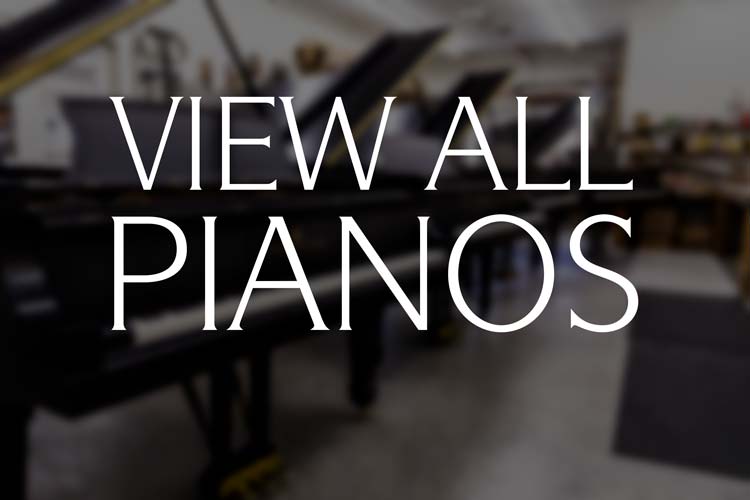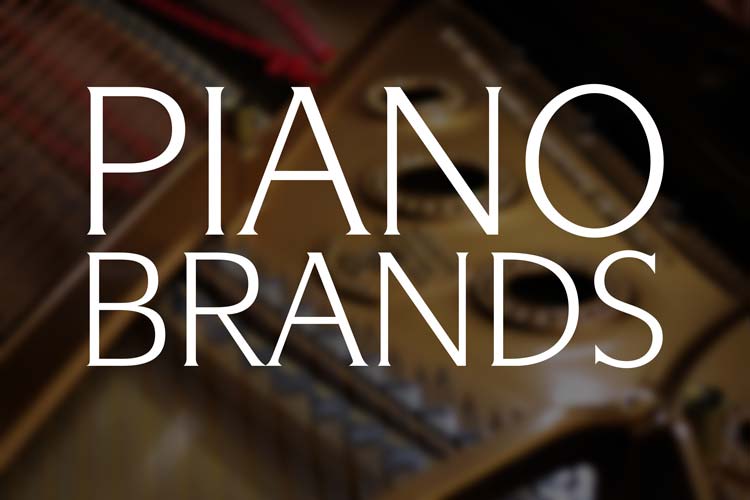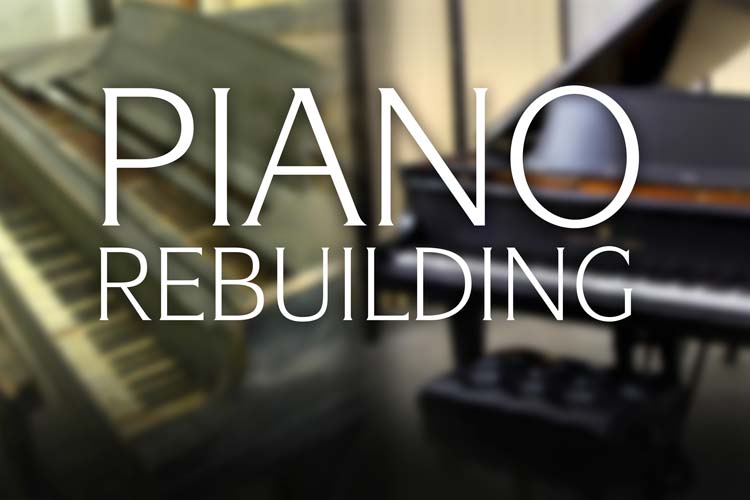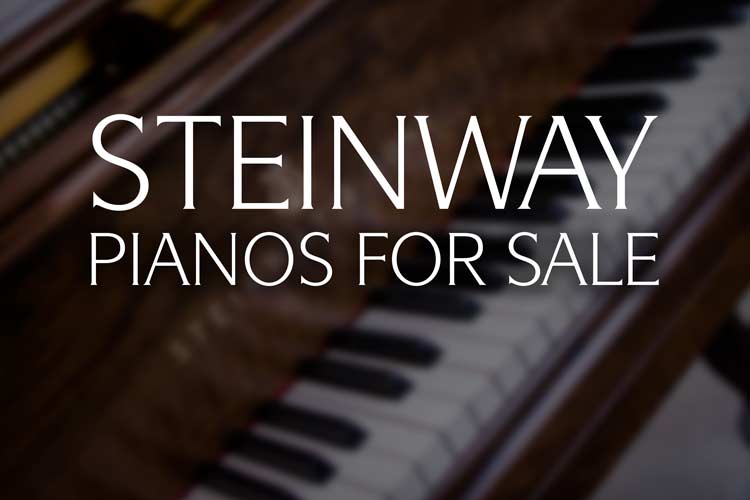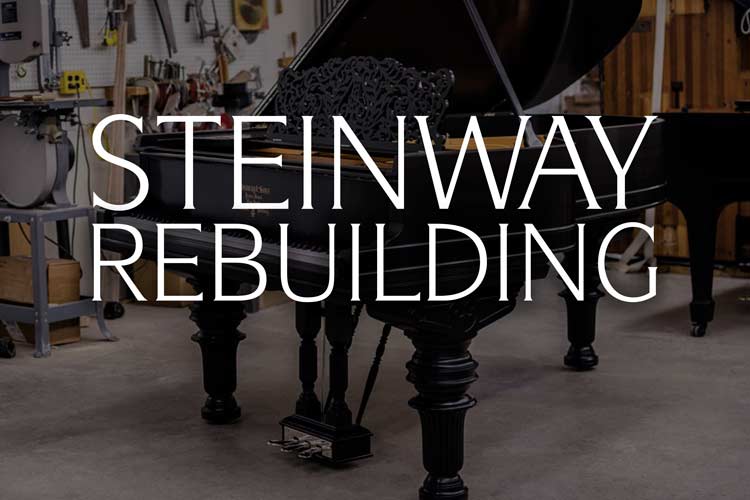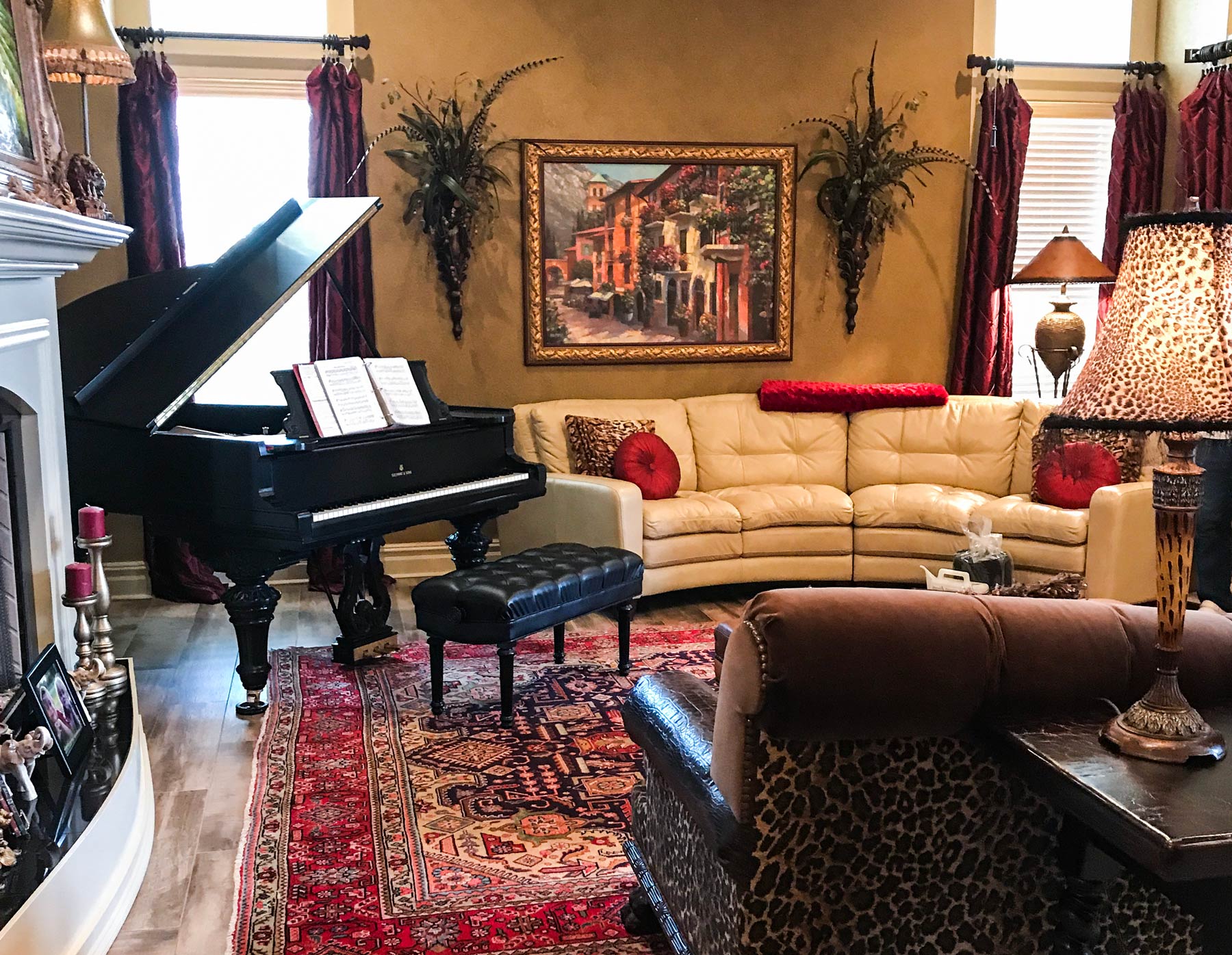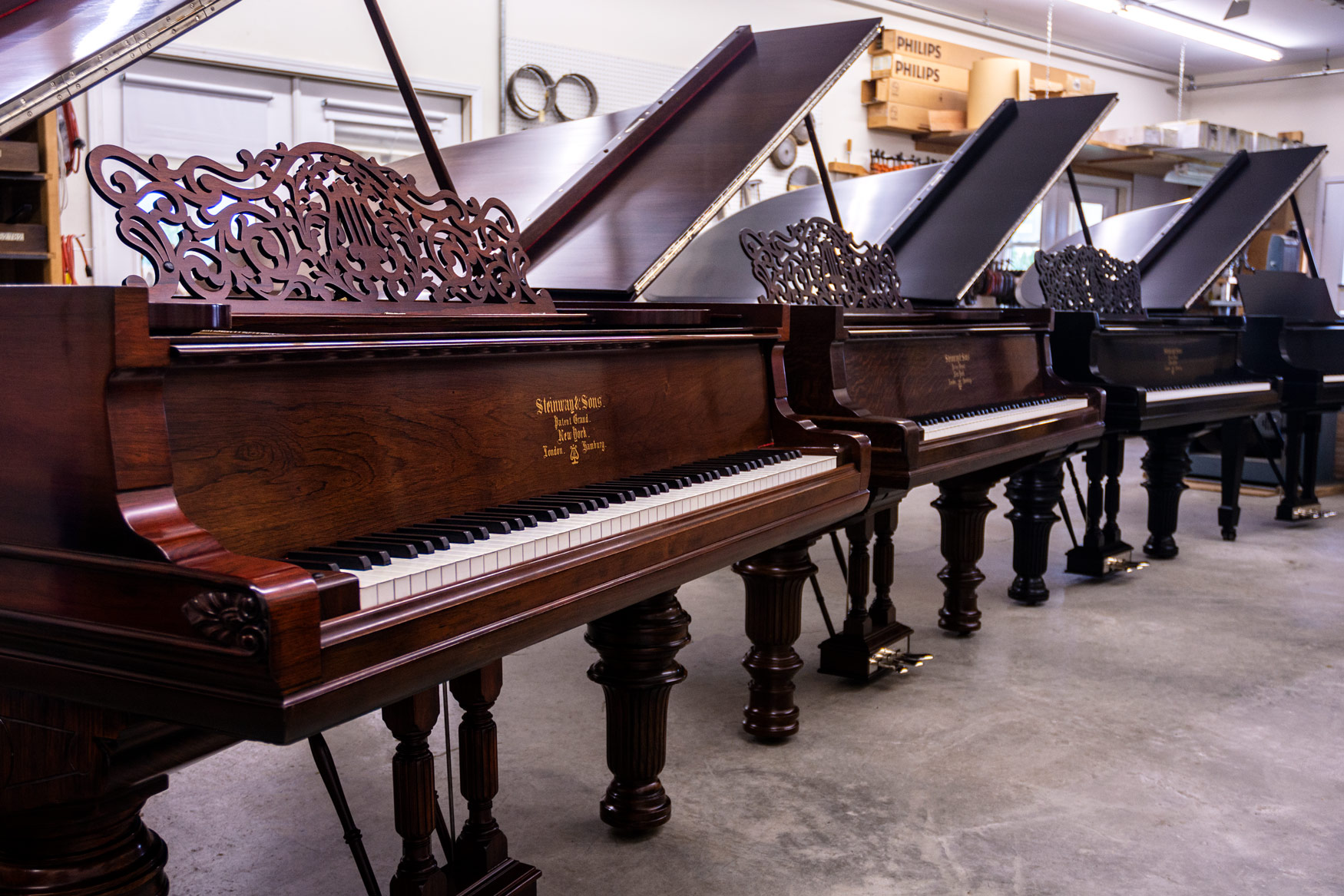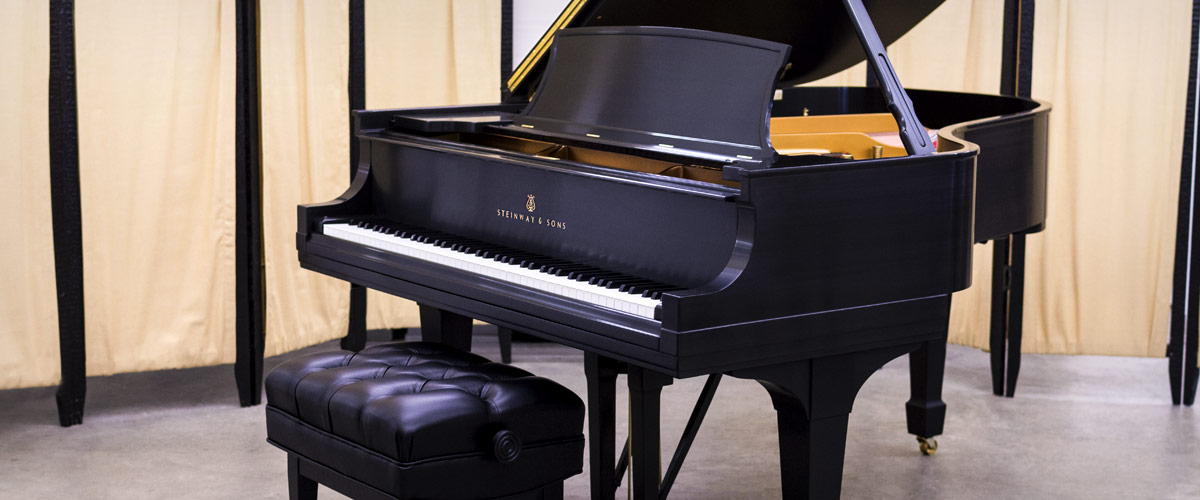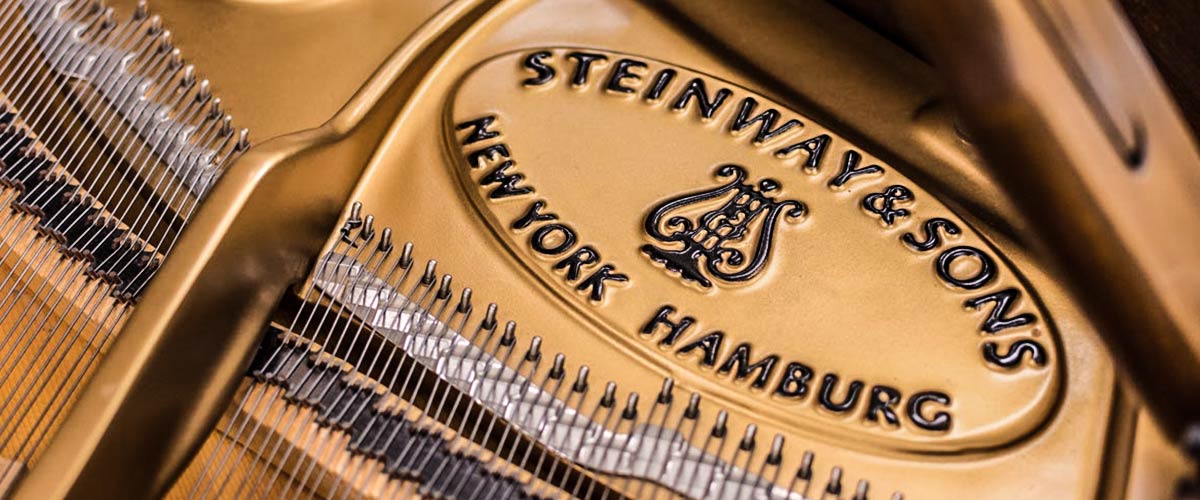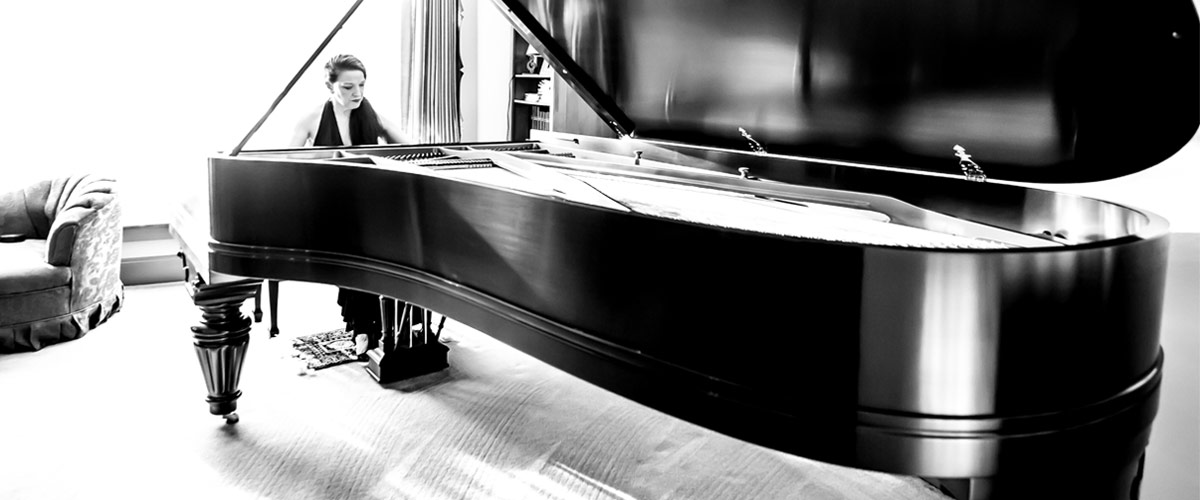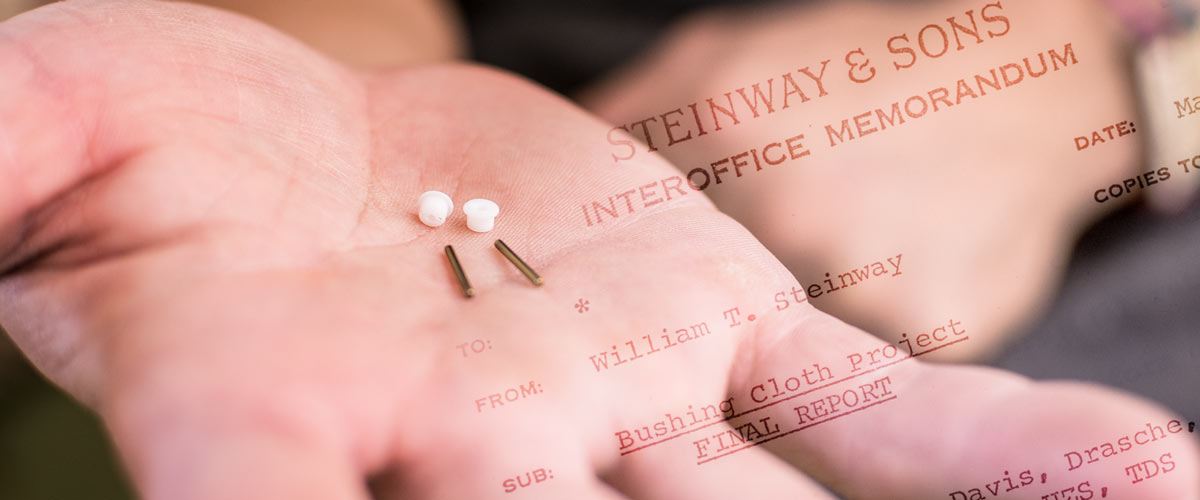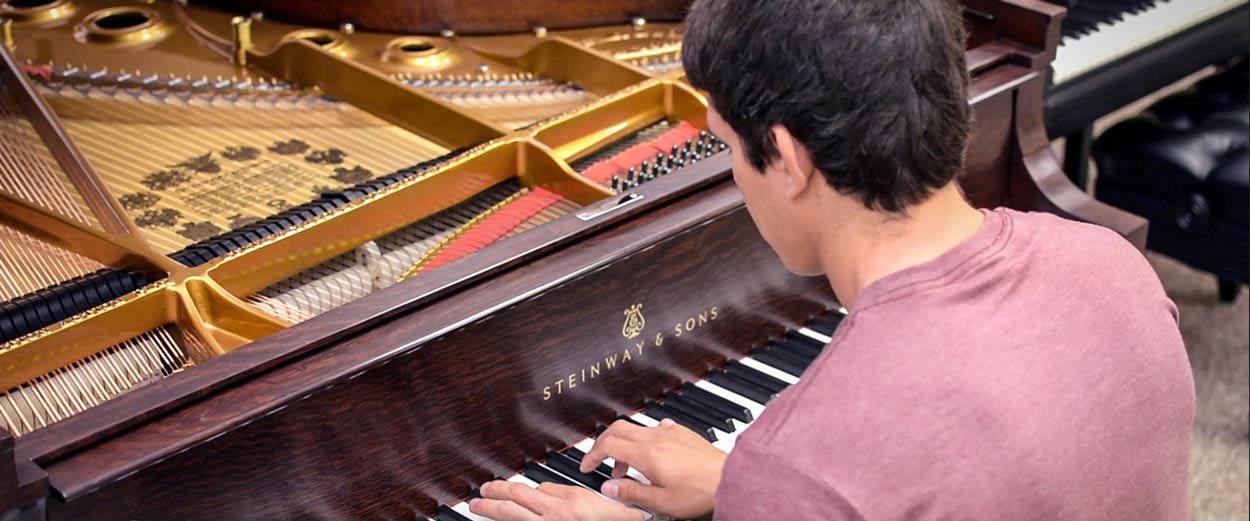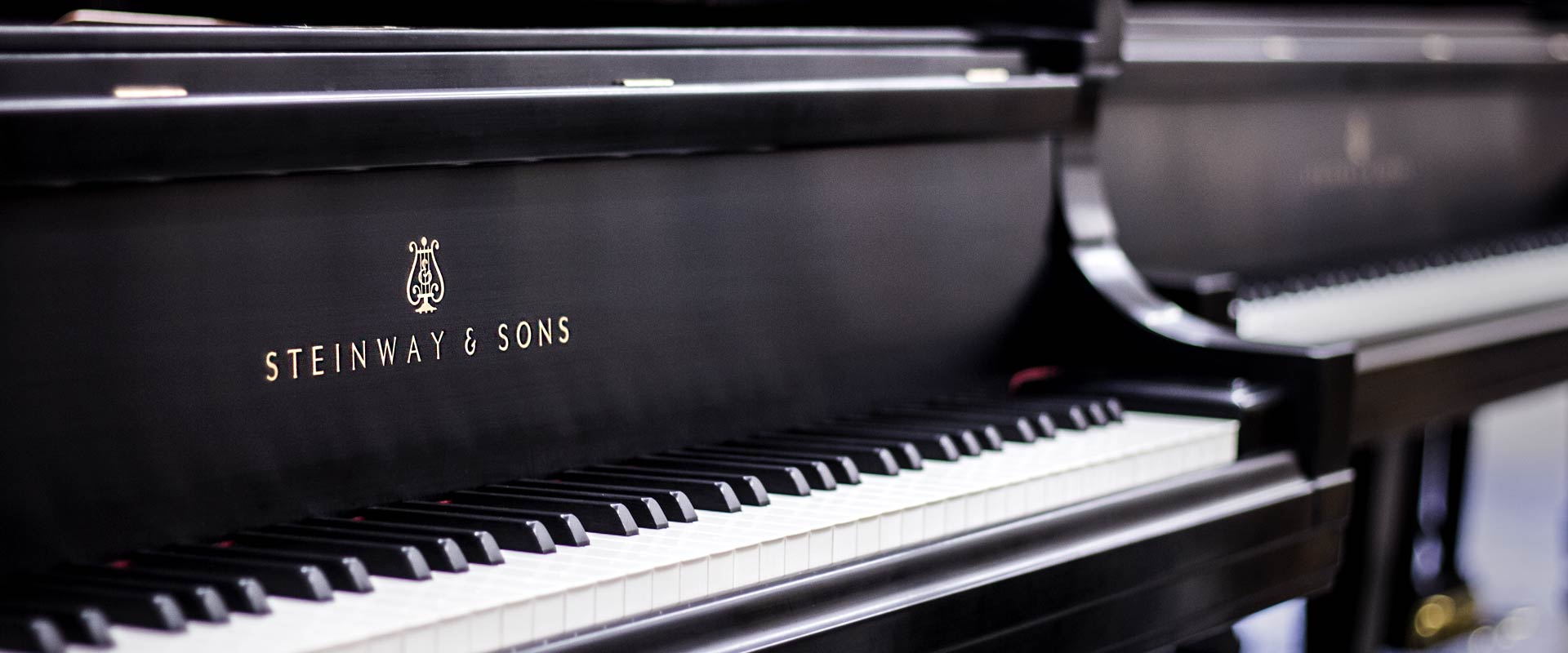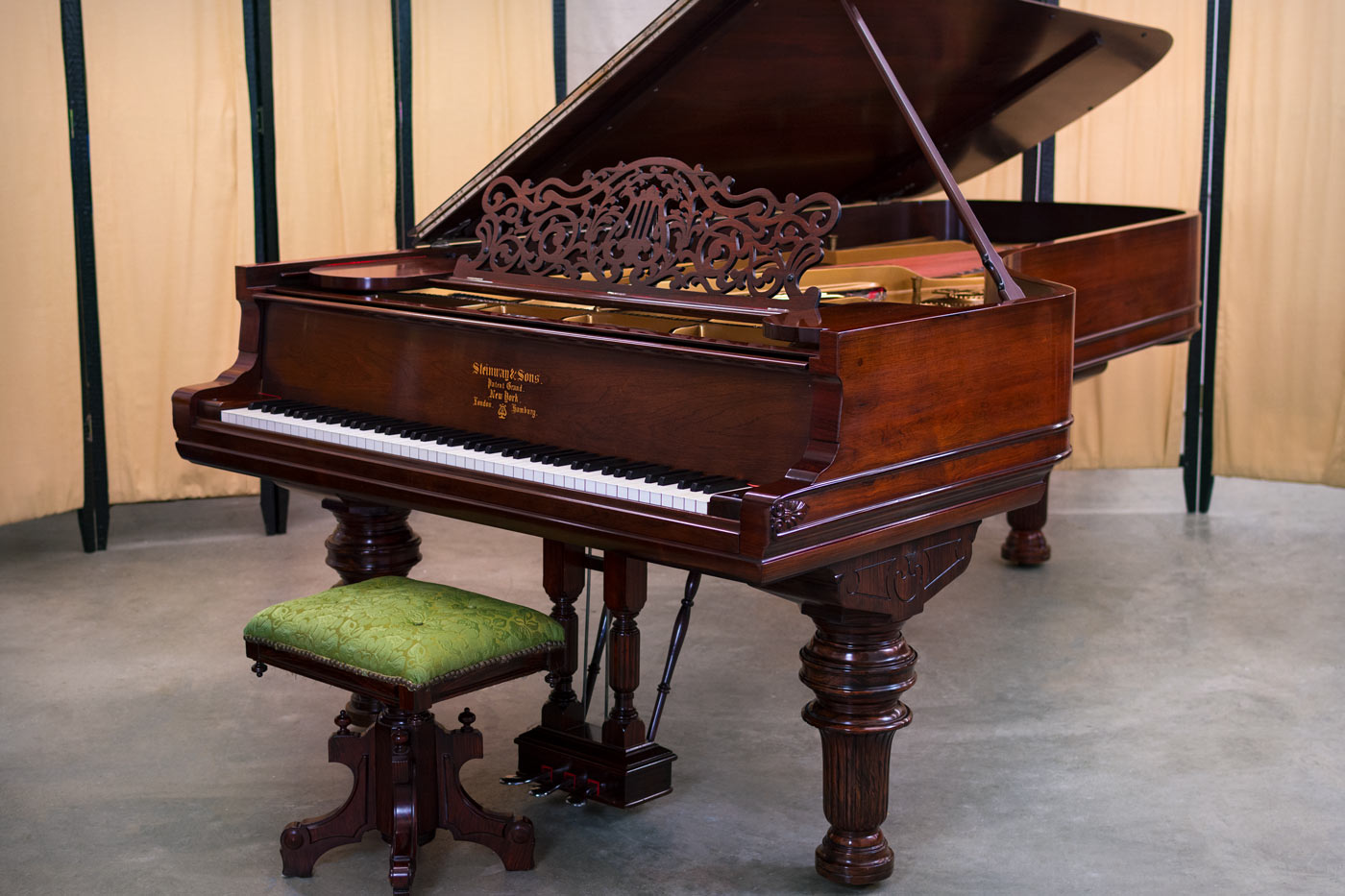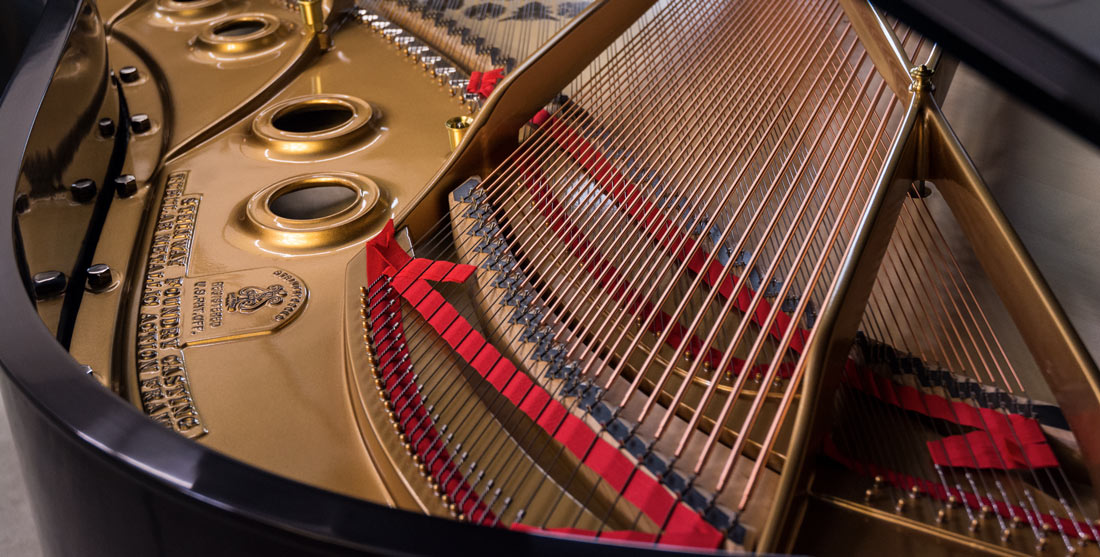Steinway Piano Provided to Little Rock, AR Clients by Chupp’s Pianos
Little Rock, AR Clients on their Chupp's Piano Service Vintage Steinway Grand Piano
We were recently fortunate enough to be able to provide a beautiful vintage Steinway & Sons Grand Piano to Sam & Kim Vallery of Little Rock, Arkansas. They were kind enough to send in a testimonial about the piano they purchased from us along with some beautiful photos, which we have included below.
"What a delightful experience it was to come and see your pianos. We had scoured our area (Little Rock) in search of the perfect piano for me, but were left disappointed. We then hit the road. We ended up in Elkhart IN, visited several stores, and saved the best for last. Dennis gave me free rein to play whatever piano I wanted. No pressure, no time frame.
A Walk Down Memory Lane – Four Pianos, Years of History
Four Pianos, Hundreds of Years of History
We recently had several pianos lined up in our Rebuilding Facility that spanned the near entirety of what is considered the golden age of Steinway & Sons Factory quality. When we saw what we had set up, we couldn't help but snap some pictures to share! For lack of a better word, this was just plain cool! From the early days of modern piano building to the style of instrument most popular today, it's all represented! Here is some detail regarding these fine grand pianos.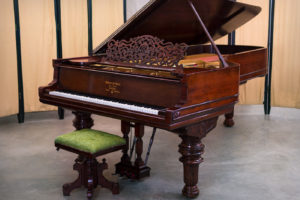 Steinway & Sons Model D #52626 was completed in early 1885. This means that construction of this piano began at the New York Steinway Factory in 1884. This is the first year that Steinway ever made what is now known as the king of concert grand pianos, the Model D! Veneered in a rich cut of rare Brazilian Rosewood and as one of the very first Model D Concert Grands ever built by Steinway, this piano marks the beginning of an era. It is a rare find indeed! The piano features a then typical round arm art case design with double narrow moldings around the case, a figured music desk with 'old-style' fretwork, hand-carved Victorian fluted flowerpot legs with hidden casters and a large box pedal lyre with carved pillars. This instrument was originally purchased for use at the DuPage County Library near Chicago, IL. This concert grand piano is currently located at our New Paris Rebuilding Facility and is available for selection and purchase.
[Click Here to Read More About This Piano.]
Steinway & Sons Model D #52626 was completed in early 1885. This means that construction of this piano began at the New York Steinway Factory in 1884. This is the first year that Steinway ever made what is now known as the king of concert grand pianos, the Model D! Veneered in a rich cut of rare Brazilian Rosewood and as one of the very first Model D Concert Grands ever built by Steinway, this piano marks the beginning of an era. It is a rare find indeed! The piano features a then typical round arm art case design with double narrow moldings around the case, a figured music desk with 'old-style' fretwork, hand-carved Victorian fluted flowerpot legs with hidden casters and a large box pedal lyre with carved pillars. This instrument was originally purchased for use at the DuPage County Library near Chicago, IL. This concert grand piano is currently located at our New Paris Rebuilding Facility and is available for selection and purchase.
[Click Here to Read More About This Piano.]
Steinway Model O Fulfills Lifelong Piano Dream for Boston Couple
"One of my wife's lifelong dreams has been to own a Steinway piano, as her parents and grandparents did. Playing the piano has always been a huge part of my wife's family's life. Although not a musician myself, but one that can appreciate quality and fine art, I approached Dennis Chupp to help me with the purchase of a Steinway Model O for my wife's birthday. Dennis not only took the time to explain his experience and the business to me, but walked me through the intricacies of why a Steinway along with his restoration business is second to none. After much research and reference calls, we made the decision to proceed with a complete restoration of a 1921 Model O. This included having the finish changed from mahogany to ebony and a piano player system added.
Quick Facts about the Steinway Model B | Infographic
The Steinway & Sons Model B - The World's "Perfect" Piano
For over 160 years, the name "Steinway" has represented the finest quality in the piano industry. Founded by Henry E. Steinway, the company quickly became a leader in both craftsmanship and innovation. One of the company's most legendary pianos is the 'seven-foot' Steinway Model B. This model of musical instrument is found in homes, institutions and performance venues around the world. View the infographic below to learn a bit more about this legendary piano. [Click the infographic to expand.]Illinois Pianist Provides Testimonial in Support of Chupp’s Piano Service
VIDEO: “How Does a Moment Last Forever” on Steinway Model B #231416
"How Does a Moment Last Forever" Cover on Steinway B #231416
Piano Technician/Pianist Philip Balke performs 'How Does a Moment Last Forever' from the live action Disney film, 'Beauty & The Beast'. Written by Tim Rice and Alan Menken. Performed on restored Steinway & Sons Model B Grand Piano #231416. This piano originally built in 1925 during the height of the piano industry's golden age. Recorded at the Chupp's Piano Showroom in Goshen, Indiana, video production by Benjamin Rogers.Everett & Steinway Grand Pianos Restored for Indiana Pianist
Rare Grand Pianos Restored by Chupp's Piano Service for Carolyn Ripp
Chupp's Piano Service recently fully rebuilt two rare grand pianos for Carolyn Ripp, a pianist here in Indiana. The first piano we rebuilt for her was a stunning Steinway & Sons Model AR grand piano in an African Flame Mahogany cabinet. This piano was originally a player instrument, built around the legendary Steinway A-3 scale design. The second was a powerful Everett 9' Concert Grand Piano. An incredibly rare instrument, this 9' concert grand boasts an incredible quality of tone and touch. Built during the company's early days in Boston, this is one of only a handful of these pianos still in existence. Carolyn was kind enough to send in the following letter of recommendation regarding our piano restoration work.
Dear Dennis and the Entire Chupp’s Team, I am seriously failing for words to describe the beauty of the two pianos you restored for me. The Steinway came first and its remarkable restoration was breathtaking. Then the unusual Everett came and we could hardly believe the volume of sound that it produces. Now I am enjoying picking the piano that will render the music at it’s finest. Every key plays perfectly, every sound is rich. Now that both are together again, I appreciate these instruments more than ever before. I always knew they were both special, but to play them now, it is just a decadent experience. Even my tuner said that when he presses a key to tune, that it is so beautiful, he feels like he is “playing” these pianos and enjoys every sound! It really shows how much your staff really appreciates and cares for the pianos that come their way. Every step of the process of achieving this remarkable result has only added to the whole, wonderful experience. BRAVO!! I have played many fine instruments of rare value, but I couldn’t want anything more. This IS the most exciting time of my life. Thank you!
VIDEO: “I’m Not That Girl” from Wicked on Steinway M #227953
"Wicked" Piano Cover on Steinway M #227953
Piano Technician/Pianist Philip Balke performs 'I'm Not That Girl' from the beloved Broadway musical, 'Wicked'. Written by Stephen Schwartz, originally recorded by Idina Menzel (original song) and Kristin Chenoweth (reprise). Performed on restored Steinway & Sons Model M Grand Piano #227953. Recorded at the Chupp's Piano Showroom in Goshen, Indiana, video production by Benjamin Rogers.Teflon Bushings – The Steinway & Sons “Teflon Era”
Teflon Bushings in Steinway Pianos– The Failed Experiment
If there was one quality that marked the early days of Steinway & Sons, it was the family company’s inherent desire to invent, tweak and improve the quality of their pianos. This led to famous innovations and improvements to grand piano design that continues to be standard a century later. Almost all of the company’s patents were filed during these first years. The study of the lineage of the modern grand piano is a fascinating one, filled with stories of both success and failure. The 'Teflon Era' will forever remain an infamous time for Steinway & Sons, but one that forced the industry to adapt around new ideas and parts.
Increased Competition – Attempted Innovation
During the early 1960s, work began on another project that company leadership hoped would again boost the company’s reputation as a world leading instrument. Continued pressure from less expensive yet high-quality pianos from Japanese makers like Yamaha and Kawai began to push Steinway from their position as the North American piano king. (This battle between the ‘east and the west’ wages on even today. ) A number of their major American competitors were either long gone or in decline. A document provided to Chupp's Piano Service proves interesting. In a letter dated April 6th, 1979 to the late Ed Hendricks, a former Vice President of Marketing and owner of Hendricks’ Pianos in Chicago,....
Famous Musicians & Their Preferred Pianos – Infographic
Over the years, countless musicians have made the piano their primary musical instrument. Companies have fought tooth and nail to win the hearts (and wallets) of artists around the world. Today's big players in the concert market include Steinway & Sons, Kawai, Yamaha and Fazioli continues to make inroads. Over the years, there have been many other companies who have made fine concert instruments that continue to be cherished by pianists. Click to view an infographic highlighting just a few of the artists who continue to make the piano come alive and learn what pianos they prefer to use on the concert stage.
Video: Restored Art Case Steinway Grand Pianos – Oak, Rosewood & More
Vintage Art Case Grand Pianos - Video Demos
The piano has long been a striking combination between its function as a musical instrument and as a piece of visual art. This was especially true during the early 'golden era' of the piano manufacturing industry. Steinway & Sons was among the many companies battling for supremacy during these competitive years. Experienced craftsmen combined with easy access to the finest woods and other materials resulted in some of the finest playing - and looking pianos ever crafted. Although today's new Steinways are rarely seen outside of their 'traditional' more modern design, expert restoration work allows musicians and appreciators of fine art the chance to experience the characteristics that have made vintage art case pianos so treasured. Below are several videos we have produced highlighting the work of the craftsmen and technicians here at Chupp's Piano Service, Inc.Steinway & Sons Model A-3 Grand Piano #188826 - Quarter Sawn Oak, Sketch 380 Cabinet.
Covered in a beautiful Quarter Sawn Oak veneer, this rare Steinway was built in 1917. Fully rebuilt by us this piano features a new solid spruce soundboard, new hard rock maple pinblock, a fully rebuilt action and much more. Quarter Sawn Oak was rarely utilized on Steinway grand pianos. This instrument is currently featured at our Goshen, IN. Piano Showroom alongside a number of other 'Crown Jewel' style grand pianos.Why has Steinway & Sons Dominated the Concert Market?
Question: "It seems like I see Steinway pianos on stage all of the time. Why has Steinway & Sons dominated the concert market?"Although Steinway & Sons Concert Grand Pianos currently rule almost all of today’s concert stages throughout the world, it wasn’t always this way. Even today, competitors fight hard to place their pianos on performance stages. With over 90% of concert pianists performing today on Steinway pianos, it is easy to forget that this company was once a small upstart fighting for their position within the massive North American piano market.
The Marketing | Steinway’s Prowess
Steinway & Sons has mastered the art of marketing. That is not to say they have not or do not continue to make quality products. Rather, they were the piano company who mastered both the art of piano building and the cut-throat world of advertising. During their early history, there were numerous high-end piano makers all competing for the ever growing piano market. Names such as Chickering, Knabe, Weber, Mason & Hamlin and Steinway were in an ever ongoing battle to become THE best in the industry. William Steinway, Henry E. Steinway’s son gets much of the credit for Steinway & Sons’ business and marketing prowess. Having high caliber pianists choose your piano over others was seen as being highly prestigious and influential. Thus, the Steinway Artists program was birthed coupled with the company’s bank of concert instruments.The Three Steps of Steinway Piano Restoration | Infographic
Three Main Steps of Steinway Grand Piano Restoration
The art of piano restoration is more than simply swapping parts. The definition of rebuilt (amount of work actually done on the piano and the associated quality) varies a lot in the industry. Premium brands like Steinway and Mason & Hamlin are among the pianos most likely to warrant an extensive restoration. This infographic touches on some of the basics that go into a full, Steinway piano restoration. Scroll through the handy infographic to learn more about the rich history and work that goes into the restoration of vintage pianos. [Click the infographic to expand.]History of Art Case Steinway Model D Grand Piano #52626
Steinway Model D Grand Piano #52626 | A Beautiful Past For A Beautiful Piano
There’s an old saying, “If these walls could talk, they’d tell you a story or two.” A concert grand piano from Steinway & Sons will last for generations and over time they accumulate a rich and beautiful history. As one of the greatest piano manufacturers in the world, Steinway pianos are used in venues and by musicians across the globe. Over time, these pianos will see their fair share of usage, and pass through many hands. At Chupp’s Piano Service, we specialize in restoring these beautiful pianos back to playing perfection, and today, we want to shine a little spotlight on a beautiful piano that we are proud to feature - Steinway Model D Grand Piano #52626.The Origin of the Modern Concert Grand
In 1884, a major step forward occurred in the development of the mature concert grand piano- the Model D. The then new Model D was designed and created by incredibly talented craftsman C.F. Theodore Steinway. This new design was the first Steinway Grand to feature a double cupola plate. It featured a 20 note bass section, was overstrung, had a continuous soundboard bridge, and a bent rim case construction. These pianos featured agraffes from notes 1-35 and a capo d’astro bar from notes 36-88. Measuring 8’10” in length with 7 ¼ octaves, these pianos are an essential piece of the piano development puzzle.“Style D has an entirely new interior construction with double cupola steel frame and continuous ring bridge. The improvement in power and sonority of tone is simply marvelous.” – William Steinway, September 1, 1884.
Refinished vs. Refurbished vs. Restored Pianos
Refinished vs. Refurbished vs. Restored Pianos | What’s the Difference?
Question: "I am looking to purchase a piano. As I've gone through various websites I've noticed the terms 'restored', 'refurbished' and 'refinished.' What is the difference between these terms?"
With numerous individuals and businesses within the worldwide piano industry, the terms ‘restored’ or ‘refurbished’ gets thrown around quite a bit. This can lead to a bit of confusion over the actual condition of the piano in question and what each term actually means. We can’t speak for other businesses or piano technicians, however below you will find the definitions we use for these various terms.

